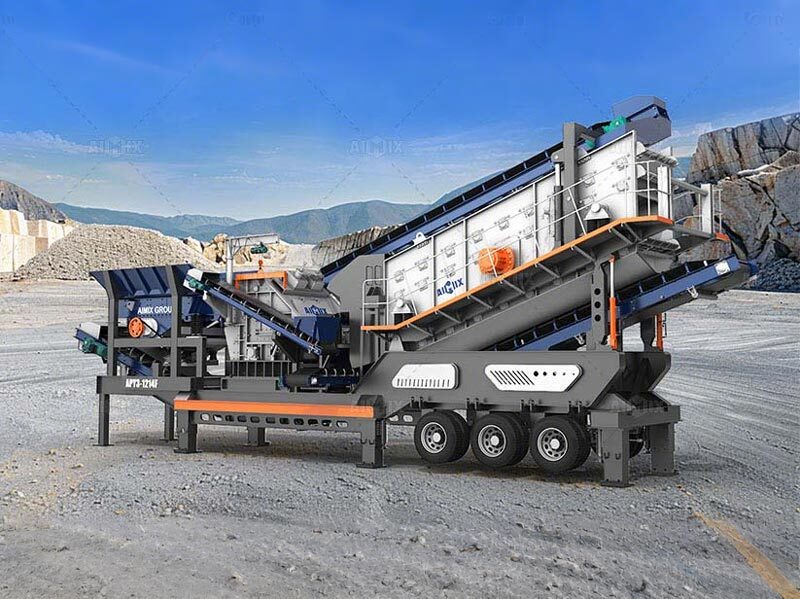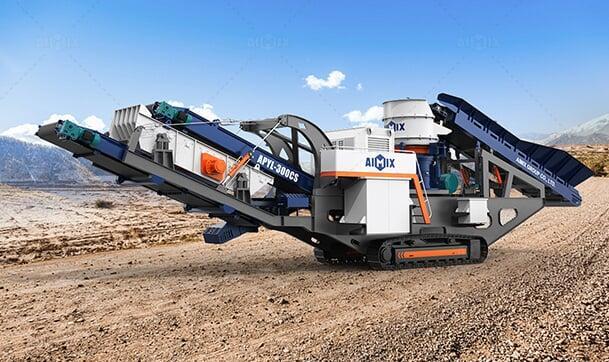Achieving a consistent 200-tonnes-per-hour output from a mobile crushing plant is a complex ballet of mechanical forces and operational intelligence. It is not merely a function of running machinery at full capacity; it is about orchestrating a seamless interaction between each component, from the primary jaw crusher's initial bite to the final product stacking from the cone crusher. Many operators focus on individual machines, but the true potential for maximizing yield lies in understanding the entire system as a single, integrated production unit. When each stage is meticulously calibrated to support the next, the mobile stone crusher plant operates at a level of harmony where bottlenecks are eliminated, and efficiency becomes the default state.
The Synergy of Crushing Stages: Orchestrating Jaw and Cone Performance
The journey of stone through a 200tph plant begins with the robust, powerful action of the jaw crusher. Its primary function is to reduce large quarry rock into a manageable size, a process known as primary reduction. The critical consideration here is not just the jaw crusher's own output, but the quality of the material it produces for the next stage. The setting of the jaw's closed-side setting (CSS) directly dictates the maximum size of the feed material entering the cone crusher. An improperly set jaw can overwhelm the cone, leading to choking and premature wear.
Conversely, the cone crusher excels at secondary reduction, transforming the jaw's output into precisely shaped, final-sized aggregates. Its efficiency is profoundly dependent on receiving a consistent and appropriately sized feed. The synergy between these two giants is the cornerstone of the entire operation. A well-tuned jaw crusher ensures the cone crusher can operate within its ideal parameters, achieving a higher throughput of superior quality product. This symbiotic relationship is the first and most crucial strategy for hitting that 200tph target reliably.

Operational Fine-Tuning: Calibrating for Maximum Throughput
Beyond the basic setup, each crusher offers a degree of fine-tuning that can significantly impact overall output. For the jaw crusher mobile, this involves selecting the optimal crusher speed and the specific jaw plate profile to match the abrasiveness and hardness of the feed material. A more aggressive plate might increase initial reduction but could lead to faster wear in certain applications.
The cone crusher is even more nuanced. The CSS is paramount for controlling product size, but the selection of the crushing chamber—be it standard, short-head, or something in-between—dictates the machine's capabilities. A chamber designed for producing fine aggregate will struggle and become inefficient if tasked with creating coarse ballast. Furthermore, the crusher's hydraulic system can be adjusted to modify the crushing force, providing protection against tramp iron and uncrushable objects, which are major causes of unplanned downtime. These are not set-and-forget settings; they require continuous assessment and adjustment.
The Supporting Cast: Maximizing Efficiency in Screening and Conveying
Often overlooked, the screening and conveying systems are the unsung heroes that dictate the actual realized throughput of a plant. The screens are responsible for the critical task of material separation. An inefficient screen allows oversized material to bypass the cone crusher and enter the final product pile, or worse, recirculate back to the cone crusher, creating a needless and capacity-killing closed circuit. This is known as a short-cycle, and it can drastically reduce effective throughput.

The conveyors, meanwhile, must be viewed as the arteries of the operation. Their speed and capacity must be matched to the mobile crushers they serve. A conveyor that is too small or too slow becomes a bottleneck, preventing the jaw crusher from discharging its product freely. Properly sized transfer points and well-maintained belts ensure a smooth, uninterrupted flow of material from the quarry face to the stockpile. Any stoppage in the conveying system forces the entire crushing process to halt.
Data-Driven Optimization: Monitoring and Adjusting in Real-Time
In the modern era, maximizing output is increasingly a data-driven endeavor. Advanced mobile plants are equipped with telemetry systems that provide real-time data on power draw, crusher pressure, and production rates. Monitoring the power consumption of the cone crusher, for instance, can provide an early warning of an over-filled chamber or a change in material hardness.
This real-time intelligence allows operators to move from reactive to proactive management. Instead of waiting for a bottleneck to become apparent, they can make subtle adjustments to feeder rates or crusher settings to maintain optimal flow. By tracking performance metrics over time, patterns emerge that can guide longer-term maintenance schedules and operational strategies. This analytical approach transforms the operation of a 200tph plant from a manual task into a continuous process of refinement, ensuring that every tonne of potential output is successfully captured.

